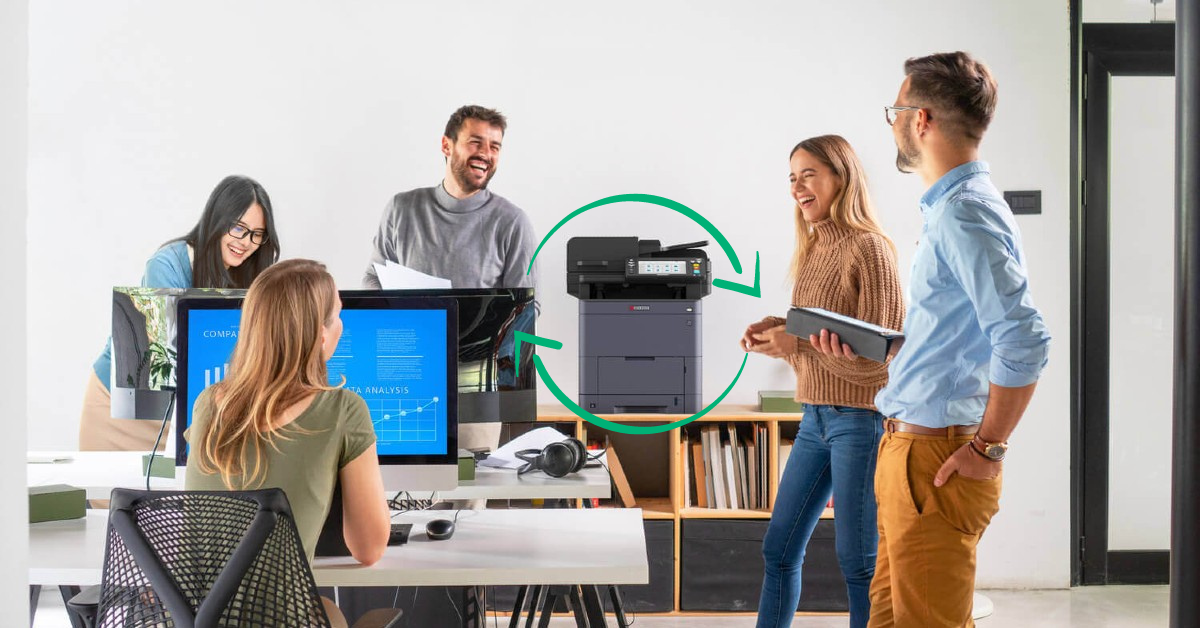
Minimising waste in the workplace makes good business sense for enterprises and SMEs alike. Not only will waste reduction strategies improve resource management and save your business time and money, but green office practices also boost staff morale, retention and recruitment
Furthermore, researchers at the University of Melbourne’s Centre for Sustainability and Business believe that the current disruption to normal business operations actually represents an excellent opportunity for adopting new sustainable practices. This is because many of our old systems and ways of working have been upended, so the inertia that typically makes organisations resistant to change has already been overcome.
In other words, now is the time to introduce new practices to reduce waste at work and by that, we don’t simply mean using a recycling bin and printing double-sided (although these should already be in place). From wasted energy and materials to wasted productivity from time-consuming processes, there are many ways a business or corporation can implement procedures to understand how to minimise waste in the workplace.
Reducing print waste
In Australia, it is estimated we use - on average - a whopping 230kg of paper per person per year. Not only does the wasted paper and toner ink increase your carbon footprint, it also racks up a surprisingly large amount of unnecessary costs for the company.
A good place to start when implementing green office practices in a workplace with a large volume of staff is with a print audit. This will allow you to take a closer look at who’s printing what, uncover any workflow issues or security breaches, and implement a more sustainable print solution.
Taking a closer look at your own equipment is also a clever way to minimise waste in the workplace. Technology has paved the way for highly innovative printers and multifunction printers that are geared towards reducing waste. Have you crunched the numbers to see how many prints per toner cartridge your equipment can achieve?
Going green by minimising energy
When it comes to minimising energy consumption in the office, there are a few quick and easy steps you can take:
Be a star
Office equipment - just like regular appliances - all have a star rating that measures and classifies energy consumption.
Check the ratings on your equipment to ensure yours are energy efficient and be sure to switch compliant equipment on to sleep mode and unplug when they’re not in use.
Be bright
Energy draining incandescent lighting is being phased out and there are many energy-saving alternatives on the market that can drive down energy usage and costs.
Be cool
Heating and cooling appliances can drain energy. However, setting your air-conditioner to a moderate 23 degrees, keeping windows and doors sealed properly and ensuring adequate insulation and window coverings are in place can reduce your energy consumption while enhancing heating and cooling.
Improving processes
Minimising waste in the workplace doesn’t just apply to materials and energy. Human energy consumption can also impact on overall wastage.
Ensuring processes are streamlined and regularly scrutinised in terms of efficiency is one clever way companies can reduce wasted productivity, particularly as many adopt hybrid workplaces and other new modes of working. Ask yourself the following the questions:
- Are the systems in place taking into consideration green solutions?
- Are staff printing when they could be digitally storing or sharing digital online files?
- Are there systems and technologies that could minimise lost productivity in the office and when working from home?
As technology evolves, so do workflow systems. Overhauling outdated business processes and technologies can improve overall productivity, contribute to a healthy and sustainable corporate culture while minimising waste and reducing your company’s overall carbon footprint.
Sustainability will be an important measure of success for workplaces of the future. Download our Green Office Guide to learn how to improve your environmental impact, while also reducing business costs and boosting efficiency.




